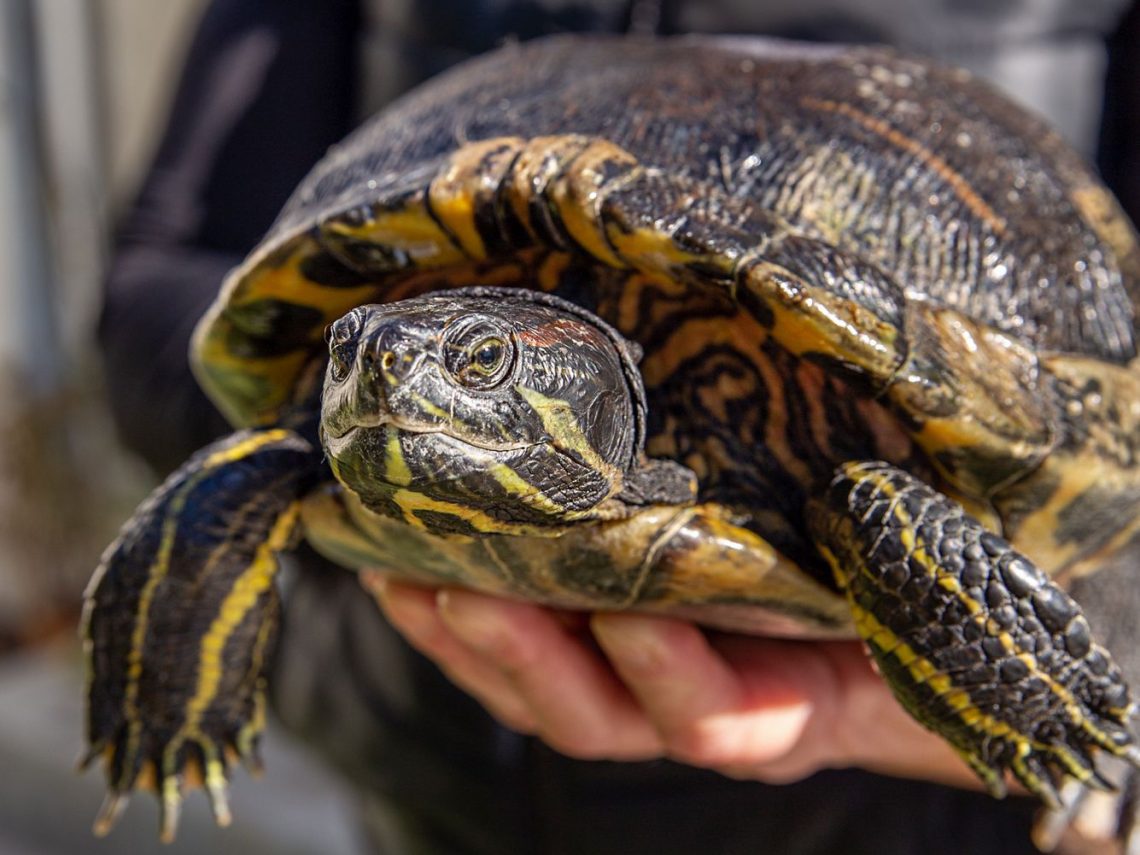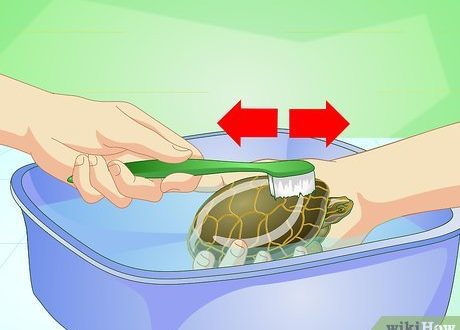
Ev saxlamaq üçün hansı tısbağanı seçmək lazımdır?
Land turtles are easier to care for than aquatic ones, but aquatic turtles are cheaper, more popular and brighter. Small turtles get sick more than adults, so ruining a baby is easier. It is much more convenient to take a teenage turtle. It is best to buy a turtle in the warm season, then there are more chances that the animal is healthy, and on the way home you will not catch a reptile. If you are a beginner, then it is better to purchase simpler and more popular species (red-eared, marsh, Central Asian, trionics). Exotic species of turtles are more demanding on the conditions of detention. In turtles up to 10 cm, it is almost impossible to determine the sex, so if you take a baby, then take any!
What is the best turtle to have? Water or land?
Turtles are land and water. Water, in turn, are freshwater and marine, but this should not bother you much, because. no one keeps sea turtles at home anyway. Well, almost no one.
Land + If you go somewhere, you can easily (on a train, by car) take a land tortoise with you in a box or in a carrier, or give it to your friends for a while. + Land is easier to feed in terms of prices for vegetables and fruits, as well as the purity of eating. + It is believed that land animals are less aggressive than water ones. Usually yes, but not always. + Cleaning a terrarium is much easier than changing the water and cleaning the filters. – Most land turtles are in the Red Book, it is against the law to sell and buy them without documents, and they are also rarely sold in pet stores – When moving to another country, it will be almost impossible to make documents for the turtle.
Water + Aquatic turtles are always brighter, more beautiful and more active than land turtles. + Most of the species sold are captive bred, so they are easy to buy legally and cheaply. It does not harm nature. + Aquatic (especially red-eared) turtles care for each other + There are many more aquatic species than land species, so it is easier and cheaper to buy a turtle that is not like everyone else.
“If I were buying a turtle, I would take a water turtle. It turns out that almost all land animals are on the verge of extermination. If I just took away an unnecessary turtle (refusenik) from someone, then I would take a land one.
Land tortoises lead a predominantly “dry” and terrestrial lifestyle, although sometimes there are more moisture-loving species that need a small body of water. Typically, these turtles eat plant foods, but some species require protein in the diet (mice, insects, etc.). Aquatic turtles usually live in the water. Land is desirable for everyone, however, how much time it will spend on it depends on the type of turtle. Some species tend to spend most of their lives in water. Such turtles in almost all cases feed on fish, and as additional nutritional products they should also receive seafood, small rodents, sometimes insects, in a word, “whole” meat (and not minced meat, not fillets, etc.). Some aquatic species may be lenient towards plant foods as well, but usually when strongly mature. Basically they are still predators.
What kind of turtle is easier and more interesting?
First, decide what kind of turtle you want – water or land. It makes no sense to keep in a city apartment those turtles that grow very large (more than 50 cm in length), they need a lot of space, they are usually more difficult to care for, and they live longer than their smaller relatives, so the turtle can catch you get bored (or your children). Large turtles include coal, radiant, spur-bearing, leopard, caiman, vulture. It is best to start popular aquatic non-aggressive turtles: red-eared, marsh, musky, painted. Of the rarer ones – side neck, kinosternon, geographical. Of the land, the Central Asian is best suited, as the most popular in our country and the best studied. In order not to be mistaken with the size – check to what size your turtle will grow according to the list of terrarium species of turtles and consider if you can provide it with a suitable terrarium or aquarium.
What age to take a turtle?
Baby turtles are more prone to disease than adults and are more likely to die or grow crooked if not properly cared for. Also, with small turtles, it is more difficult to carry out medical procedures, both for the veterinarian and for you. So if you do not want your child to be upset and cry over a dead pet, it is better to get a teenage or adult turtle.
I want to get the smallest (dwarf) turtle so that it does not grow big! There are NO dwarf and ornamental turtles among either land or water turtles. Yes, there are species that do not grow more than 12-14 cm in adulthood – these are from land spiders, Egyptian turtles and from water – musky, but they cost much more than popular species and it is much more difficult to find them. Under the guise of dwarf turtles, a baby red-eared turtle is sold, which grows up to 15-25 cm, is predatory, and it requires an aquarium of 100-150 liters. Keeping a red-eared turtle.
I need the easiest turtle to care for! Absolutely all land turtles need a terrarium, and aquatic turtles need an aquaterrarium. All turtles are reptiles and have +/- one principle of the body, therefore, like most other reptiles, they require very specific conditions of detention. As a rule, for land animals, this means the obligatory presence of upper heating, ultraviolet radiation, soil in the terrarium, and rarely, the presence of humidity. For water – land, upper heating, ultraviolet, a large amount of water, a filter. In other words, all turtles are more or less the same, and there are basically no special cold-resistant, bullet-proof, sofa-not-pressing, cat-food-eating ones.
I want an exotic turtle!
There are several hundred different types of turtles in the world. Both water and land. You have the right to choose any kind you like, but keep in mind that not every kind of these several hundred can be gone and just like that bought at any pet store. Your choice is primarily limited by external factors. For example, some turtles are not removed from nature at all due to the extremely small number of living individuals; some turtles are unrealistic to keep in an apartment due to their size or specific conditions; and most importantly, most species are virtually impossible to legally bring into our country and legally sell them here, so pet stores prefer not to do this. Thus, the choice of a turtle depends more on the “can” factor than on the “want” factor. In short – from land turtles almost constantly and in many places two species are available (Central Asian and Mediterranean), from water turtles – about three (marsh, trionyx, red-eared). Almost any of the listed types can be taken free of charge from us at the HRC. In pet stores, the price for water ones starts from 300 rubles, and for land ones from 600 rubles. All other types are available, as a rule, only on order from private traders who have the opportunity to bring them from other countries. The price in this case basically starts from the position of 1000 for water and from 4000 r for land and can reach several tens of thousands per individual. Our site contains a complete list of turtle species, which we try to keep as up-to-date as possible, so you can read about each species you like, and especially keen enthusiasts can try to find rare species for sale, but this requires serious time and material costs. At the very least, you will have to delve into the process of buying and selling, CITES, imports and other cases associated with the purchase.
Is it better to take a female or a male?
If you buy a small turtle, then its gender cannot be reliably determined. If an adult for single content, then any gender can be. This, as a rule, has little effect on the behavior of the tortoise (except for male Central Asian and Mediterranean tortoises). If you take a turtle in a pair, then the female-female pair will most likely live in peace, and in pairs, the female-male or male-male will fight, so it should be possible to seat the turtles. Land males are more noisy and aggressive, they can rarely be kept with other males or even with females so that they do not come to fights. Females of any species from a certain age begin to lay eggs (including unfertilized ones), which adversely affects the health of the turtle.
What kind of turtles can be brought into a country pond?
In the country pond at a latitude not north of Moscow, you can keep in the warm season: red-eared, bog turtles, as well as trionics. It is better not to risk other types of turtles. Only marsh turtles can be left for the winter if the pond does not freeze completely and fish are found in it. Sick and weakened turtles may not survive the winter. It is better to release turtles into the pond no earlier than June, when the temperature stabilizes, you can take them away at the end or middle of September. The volume of the pond depends on the number of turtles released into it, but the more the better. It is highly desirable that it also contains not very large fish so that the turtles can catch and eat it themselves, as well as snags or large protruding stones so that the turtles can bask on them. The pond itself should be fenced with a fence, preferably a meter long, so that the turtles do not run away.





